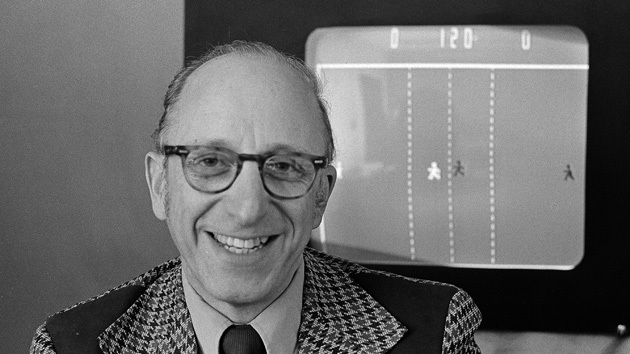Video Game Father Dies at 92
The pioneer of game consoles Ralph Baer passed away
 The portal Gamasutra reported the death of Ralph Henry Baer, referring to his own source from people close to him. Some publications, evaluating his contribution to the digital entertainment industry, call Baer the "father of video games."
The portal Gamasutra reported the death of Ralph Henry Baer, referring to his own source from people close to him. Some publications, evaluating his contribution to the digital entertainment industry, call Baer the "father of video games." Rudolph Heinrich Baer was born in 1922 in Germany into a Jewish family, whose members successfully fled to the United States two months before the events of Kristallnacht .
In America, Baer changed his name. He graduated from the National Radio Institute in 1940 and even managed to serve in military intelligence. The benefits of a former soldier have helped in further education at the American Television Technology Institute. In 1949, Baer received a bachelor's degree and became a television engineer.
He has worked at Wappler, Loral Electronics, Sanders Associates, and IBM, but we remember him for his contribution to the video game industry. In fact, it was Baer who first created what is today the home gaming console.
In 1966, he began to study the possibilities of computer games on a television screen. At that time, televisions became cheaper, which opened up a huge market for other applications of these devices, including the military, with which he was familiar, since in 1987 he worked for a military organization.
The realization was that at first it had the name Brown Box. The name was obtained by the color of the film into which the body was wrapped to give the surface a wood texture. Baer recalled that a quarter of an hour after the start of the demonstration of the device to a representative of the patent office, the room was filled with people: all the employees on the floor wanted to play.
It was difficult to interest TV manufacturers in an unusual gadget. In 1971, Baer licensed the Magnavox set-top box, and the “brown box” received the marketing name Magnavox Odyssey.
It was the first digital home game console in history. It is interesting that its logic was not transistor-transistor, but diode-transistor: in the case there were about 40 diodes and 40 transistors.
Even despite the lack of sound and a rather poor marketing campaign (users believed that the console would not work with non-Magnavox televisions), more than 300 thousand copies were sold. In total, 27 games were released under the prefix .
Their logical elements were in cartridges, but there were no elements on the printed circuit boards - there were just tracks connecting the contacts. However, Baer proposed the idea of active cartridges. The kit also included stickers on the screen, sheets for keeping an account and other game items.
In addition, Baer created the Shooting Gallery . It was the first light gun for home game consoles and the first peripheral device for a game console. The gun was sold along with the game for him.
In 1978-1979, Baer participated in the creation of three well-known electronic games: Simon , the sequel to Super Simon and the less popular Maniac .
In 2006, President Bush awarded Baer the US National Medal for Technology and Innovation. In 2008, the inventor received the Pioneer Award at the Game Developers' Choice Awards. Baer was a lifetime member of the Institute of Electrical and Electronics Engineers (IEEE).
On December 6, 2014, Ralph Henry Baer died at his home in Manchester, New Hampshire. Over 92 years of his life, Baer has received over 150 patents in his name.
